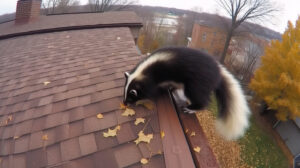Despite their odorous nature, skunks make great neighbors. Commonly misunderstood, these animals are an important and beneficial part of the ecosystem. So, what do people really know about these smelly creatures? Here are seven myths about skunks, debunked.
Myth 1: Skunks Are Blind
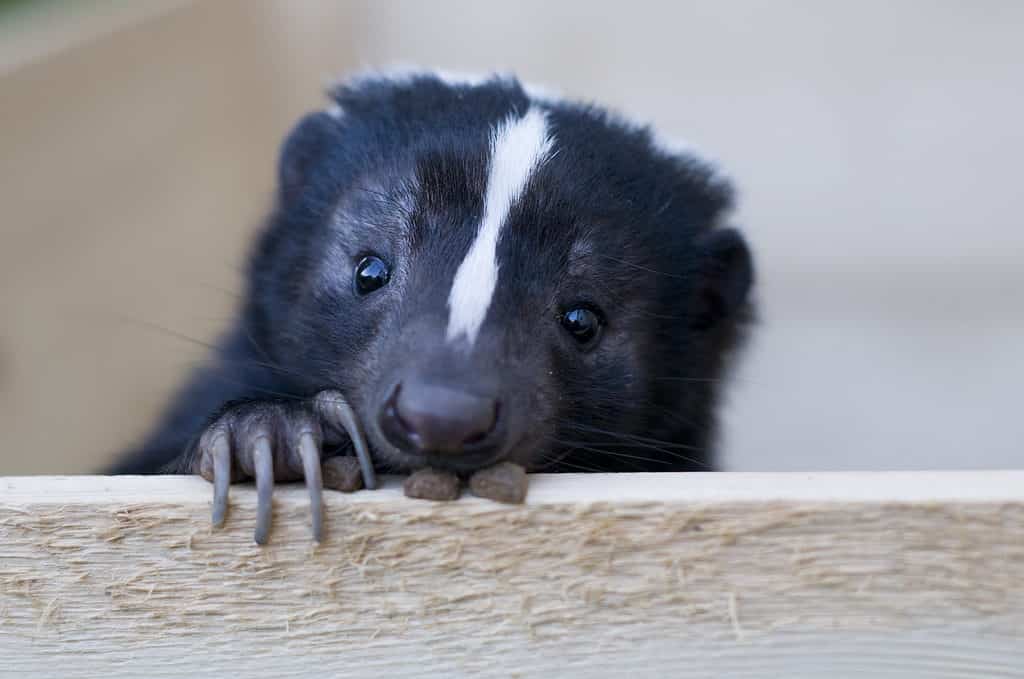
can see better in the dark than it can in the light.
©Yasmins world/Shutterstock.com
It’s true that skunks are not blessed with good eyesight, but they are not blind in adulthood. Babies open their eyes at around three weeks of age, and from then on are able to see.
While they can see, they don’t see well. Skunks have poor peripheral vision, so they best see directly in front of them. Even then, they only see objects that are around 10 feet away or less. Since they don’t have great eyesight, they are easily startled. However, they compensate with a strong sense of hearing.
Myth 2: They Are Pests
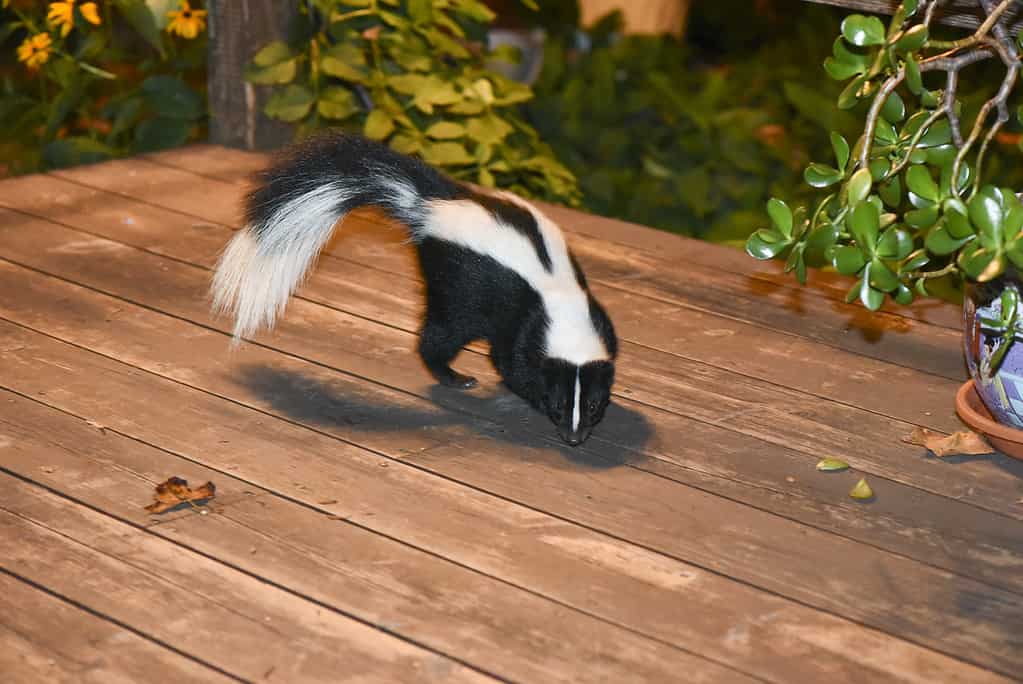
The skunk has adapted well to living in suburban and urban areas.
©Photon-Photos/iStock via Getty Images
While skunks may seem like an annoyance with their distinctive odor, these animals are nature’s free pest control. They eat grubs, Japanese beetles, and other insects that can decimate backyard gardens. Skunks are omnivores, so they may occasionally steal a snack from a garden. However, more often than not, they protect plants from being destroyed by hungry grubs.
Some people also think they are pests because they tend to get into garbage cans. Food scraps and trash are an attractive buffet for these animals, but properly securing trash bins can easily deter these non-climbing animals.
Myth 3: They Will Spray Any Threat
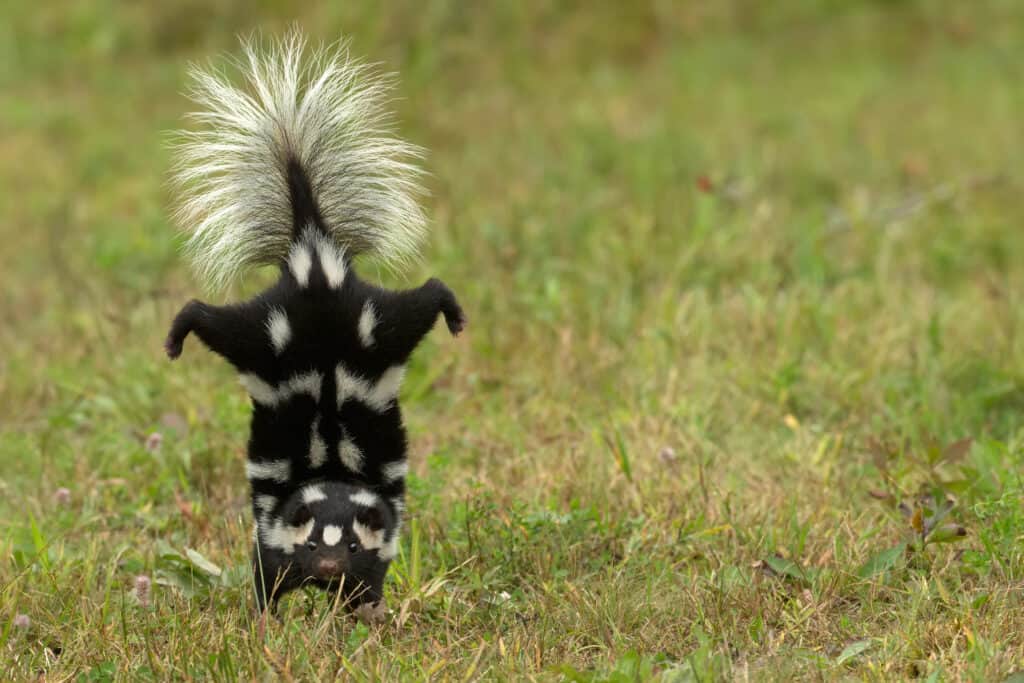
While all skunks raise their tail before spraying, the eastern spotted skunk also does a handstand!
©Agnieszka Bacal/Shutterstock.com
A skunk’s smelly spray is their only line of defense against predators and threats, so spraying is always their last resort. A skunk can spray up to six times in close succession when they feel threatened. However, after they spray like this, it can take up to 10 days for them to “recharge” and refill the glands that produce the bad-smelling liquid. Without this fluid, a skunk is effectively defenseless, putting them at risk for predation.
As a result, these animals do not want to spray unless they absolutely have to. Striped skunks give several warnings before they let loose. First, they raise their tails and shake them in warning. If that doesn’t deter the threat, they will stomp their feet and turn so that their hind end faces the threat, sometimes forming a “U” shape with their rear end and face. The skunk will only spray if none of these warning signs work.
Myth 4: They Only Come Out at Night

The animal’s range is small, spanning from half a mile to two miles from their den site.
©Frank Fichtmüller/iStock via Getty Images
Skunks are nocturnal, which means they are most active at night. However, this doesn’t mean they won’t come out during the day. Many people think that a skunk that is awake during daytime hours is ill or that something is wrong. While this is a possibility, if the animal is active and healthy-looking, and has normal mobility, there is probably nothing wrong.
If a skunk doesn’t get enough to eat during the day, it will forage during the day (think of it as the nocturnal animal’s equivalent of a midnight snack). This is particularly common during baby season, when mothers may require extra nutrients. Young skunks also venture out in daylight as they begin to explore the world.
Causes for concern are if the animal appears weak, lethargic, is unable to stand or move, or is moving erratically or in circles. If a skunk appears injured or ill, contact a local wildlife rehabilitator for advice before intervening.
Myth #5: All Skunks Have Rabies

In addition to rabies, these animals can carry distemper which has similar neurological symptoms.
©iStock.com/Edwin_Butter
Like all mammals, skunks can contract and pass rabies. They are considered a rabies vector species, meaning they are common virus hosts. In 2020, the Centers for Disease Control and Prevention reported that skunks made up 20.3% of cases of rabies in wild animals. The skunk rabies variant is most commonly found in California, Texas, and the Great Plains region of the United States (though they can carry different rabies variants nationwide).
However, this does not mean that all skunks have rabies. Considering the number of these animals in the country, it is not surprising that they make up many rabies cases. When compared to population size, the percentage of skunks with rabies is much lower than those that do not have rabies. A 2021 California study estimated that only 6% of skunks in the state were rabies carriers.
There are several signs that may indicate a creature does have rabies, including aversion to water, foaming at the mouth, or unusual activity and erratic behavior. Once again, if there are concerns about rabies, contact a local wildlife rehabilitator or animal control for more information.
Myth #6: They Kill Domestic Pets
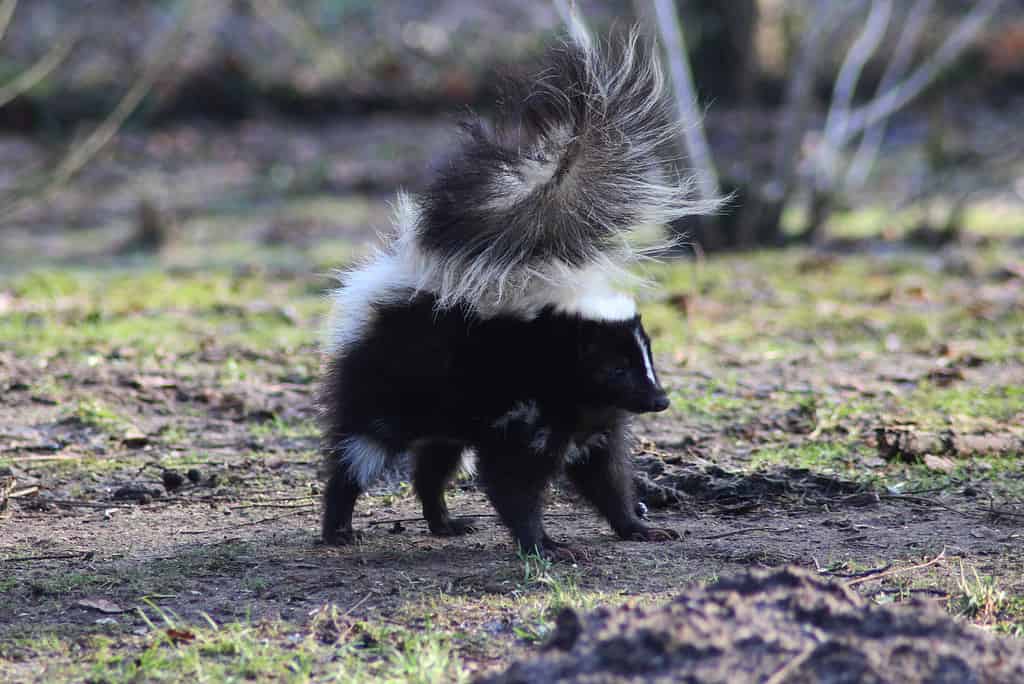
Skunks have a top speed of 10 miles per hour, while a domestic house cat can run 30 miles per hour.
©michael meijer/iStock via Getty Images
Since skunks are omnivores, they do consume other animals—but rarely anything sizable. Skunks prefer insects such as worms, grubs, roaches, and beetles, and will eat small rodents or birds if they are injured and easy to catch. Skunks are sluggish animals that move slowly and have a top speed of only around 10 miles per hour. They are also small, weighing just four to nine pounds.
Because of this, they are foragers rather than hunters. Skunk claws are designed for digging, not fighting, and their teeth are small. As a result, harming or killing a pet is incredibly unlikely. In fact, a domestic dog or cat is much more likely to harm a skunk than the skunk is to harm them.
Myth #7: Skunks Are Aggressive
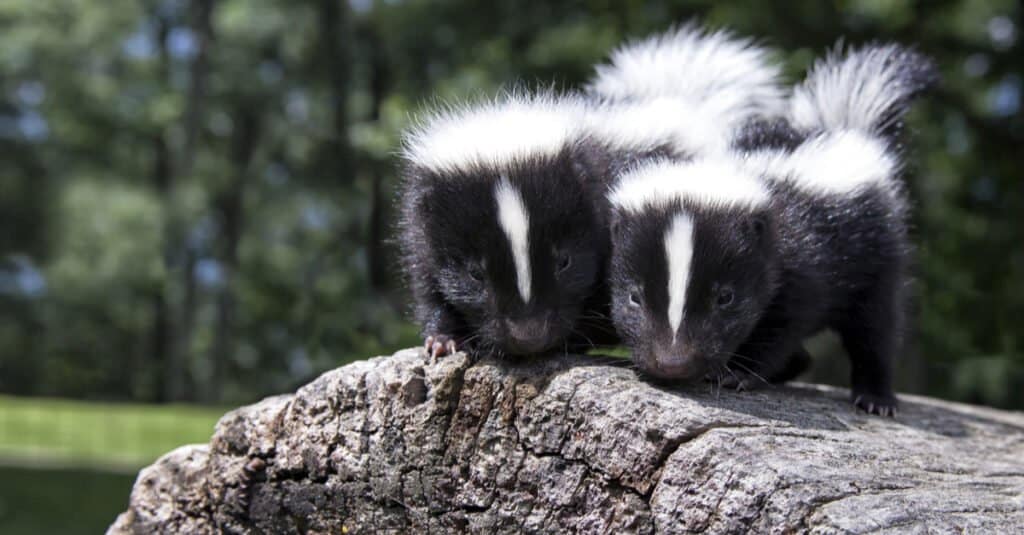
Babies are called kits and can spray when they are around a week old.
©critterbiz/Shutterstock.com
Skunks will defend themselves, if necessary (think back to that smelly spray), but overall, they are lovers, not fighters. They are shy animals that prefer to avoid conflict, if at all possible, particularly because they can only spray occasionally. Instigating fights is not beneficial to a skunk and puts them in great danger. These passive creatures would much rather leave everyone else to their own devices so that they can be left to theirs.
Myth #8: They Are Rodents
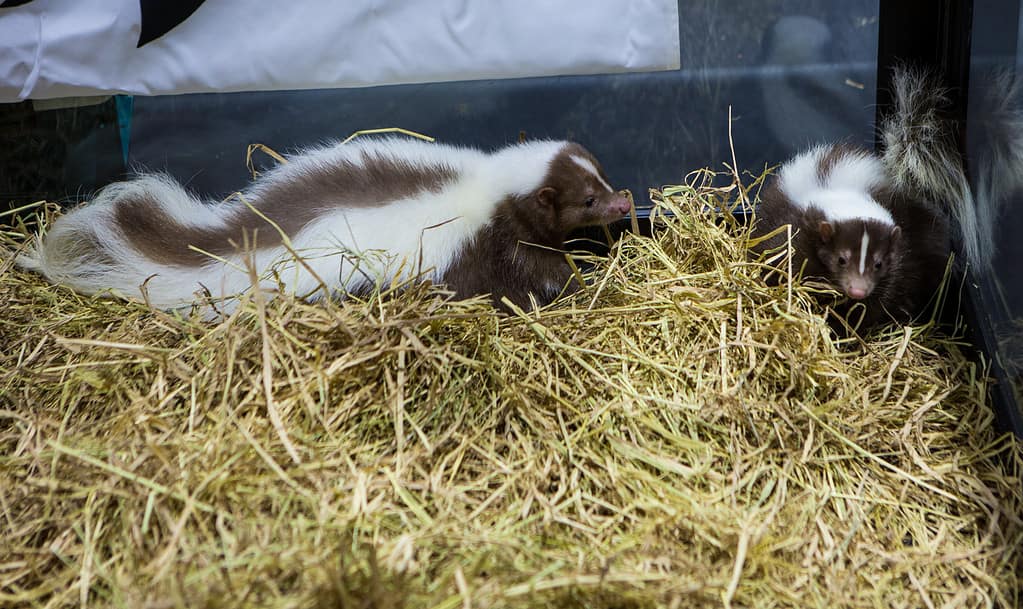
There are typically four to six babies in a litter.
©Itsanan Sampuntarat/iStock via Getty Images
While skunks may have a pointy face like a rodent, they are not members of the Rodentia family. Skunks used to be classified in the Mustelidae group, composed of weasels, badgers, otters, ferrets, and minks. However, they are now considered to fall under their own family called Mephitidae, which includes skunks and stink badgers. Mephitids are differentiated from Mustelids due to their larger scent glands and the ability to aim their spray.
Summary of Myths About Skunks
| Myth Number | Myth |
|---|---|
| Myth #1 | They are blind |
| Myth #2 | Skunks are pests |
| Myth #3 | They will spray at any threat |
| Myth #4 | They only come out at night |
| Myth #5 | All skunks have rabies |
| Myth #6 | They kill domestic animals |
| Myth #7 | Skunks are aggressive |
| Myth #8 | They are members of the rodent family |
Thank you for reading! Have some feedback for us? Contact the AZ Animals editorial team.





